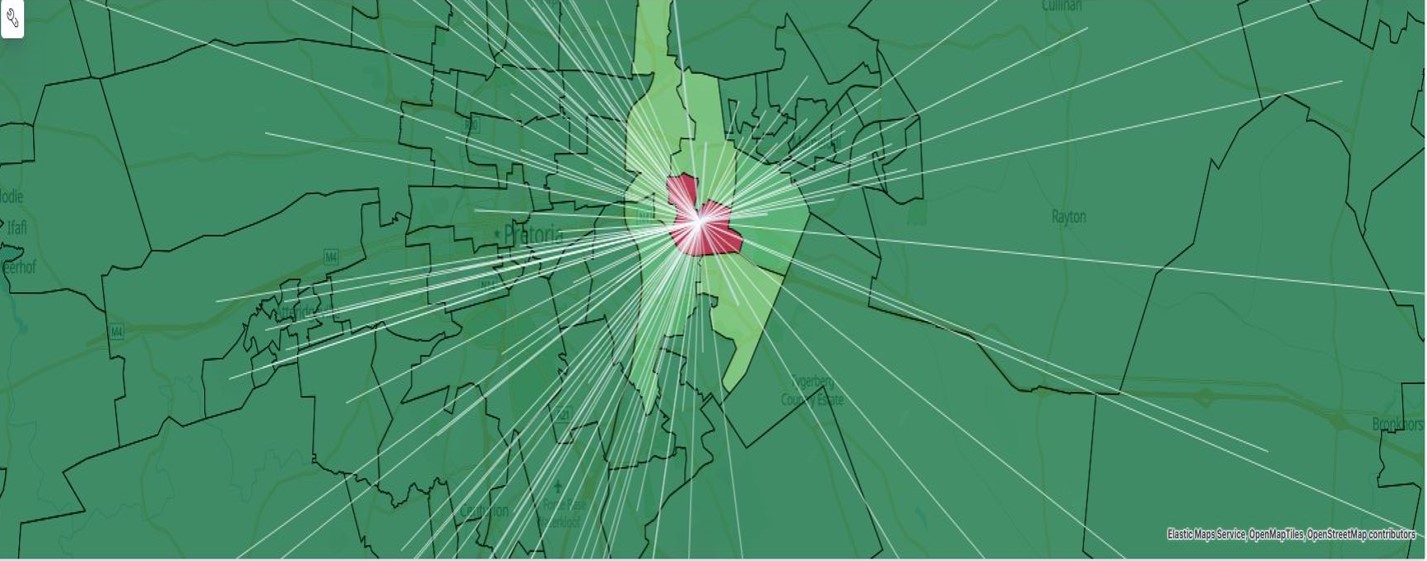Tracking mobility to better understand COVID-19
As part of the national data-driven approach to countering COVID-19, the CSIR has developed a platform that monitors human mobility to better understand movement patterns across specific areas, such as virus hotspots, high-risk and vulnerable areas, as well as monitor lockdown compliance and the spread of the virus.
As part of the national data-driven approach to countering COVID-19, the CSIR has developed a platform that monitors human mobility to better understand movement patterns across specific areas, such as virus hotspots, high-risk and vulnerable areas, as well as monitor lockdown compliance and the spread of the virus.
The platform presents a dashboard of integrated and holistic national mobility intelligence to stakeholders and decision-makers in data, research and statistics, the national Department of Health, law enforcement agencies, provincial roads and transport departments, the National Institute for Communicable Diseases and others.
Various partners are involved in the project to provide anonymised data and intelligence on the movement of people at different levels. Mobile network providers, for example, are key to data collection for the platform, as they provide the anonymised movement data that may also include COVID-19 self-screening data.
Other entities, such as tracking companies and cloud-based service providers, such as Google and Apple, play a vital role in providing public mobility reports. These mobility reports provide more insight on the places that people visited during the COVID-19 pandemic, such as workplaces, shopping centres, schools, universities, churches and government facilities. This intelligence can assist health authorities to enhance their contact-tracing efforts in cases of virus outbreaks.
There are several data-sharing agreements in place and others are being sought to continuously add to and enhance the mobility reports that the CSIR COVID-19 Tracker generates.
Dr Jabu Mtsweni, Manager of the CSIR’s Information and Cyber Security Centre in Pretoria, says the centre is positioned ideally to manage such a national data project. “As the CSIR, we are independent from commercial interests or competition,” he says. “That means we can receive data from a myriad of sources that know that the data will be used for the best interest of the country and that they will be kept safe and secure.”
The actual analyses are performed live from the Centre for High Performance Computing, where there is infrastructure for big data projects.
Movement patterns are analysed at a national level – and can be drilled down to show intelligence for provinces, municipalities, districts and wards. In cases of outbreaks, movement from a particular event (such as a group gathering) can thus be tracked to better arrest the spread.
Data show metrics of people moving about in a particular period, where (how far) they travelled to and how long they spent at a destination.
Through such intelligence, it is possible for health administrators to review regulations and speed up response interventions, such as targeting points for screening and testing, issuing lockdown alerts, and using heat maps to plan for emerging hotspots.
Mtsweni says the system has a longer term potential benefit in crime prevention as well. “With comprehensive and quality data, we can track socioeconomic activity in an anonymised manner to better anticipate occurrences of crime,” he says.

![]()


